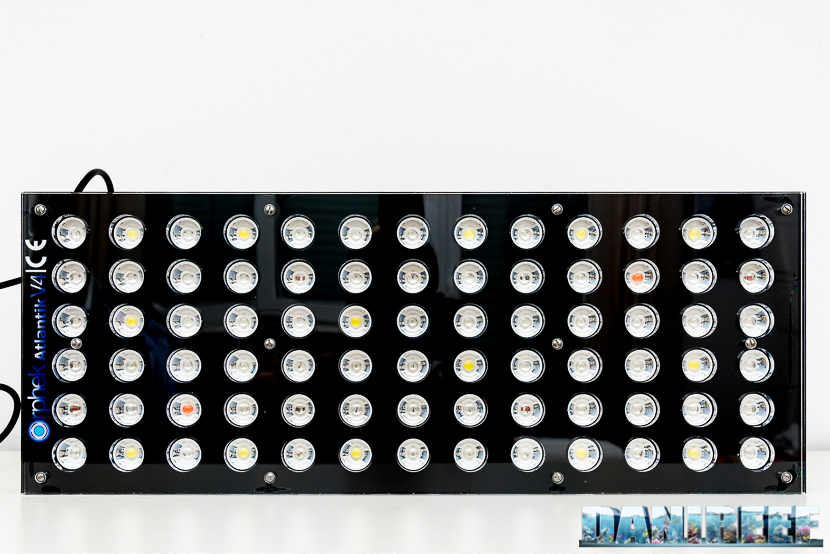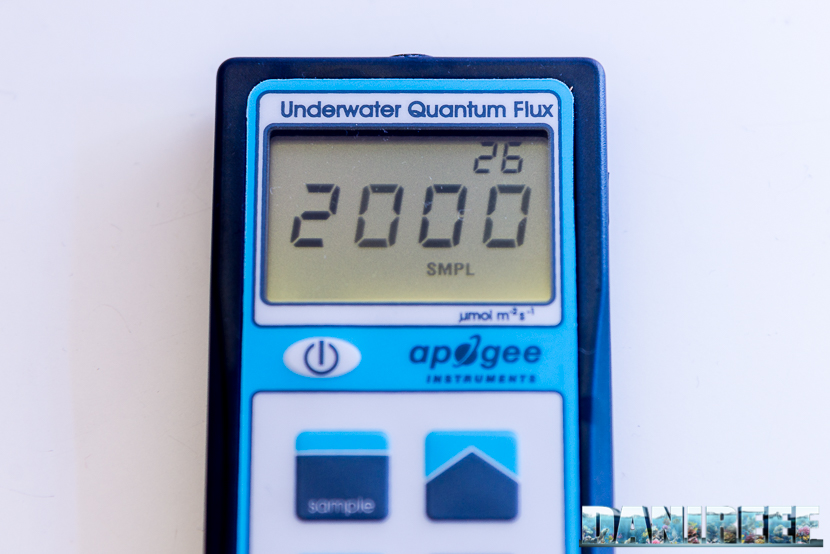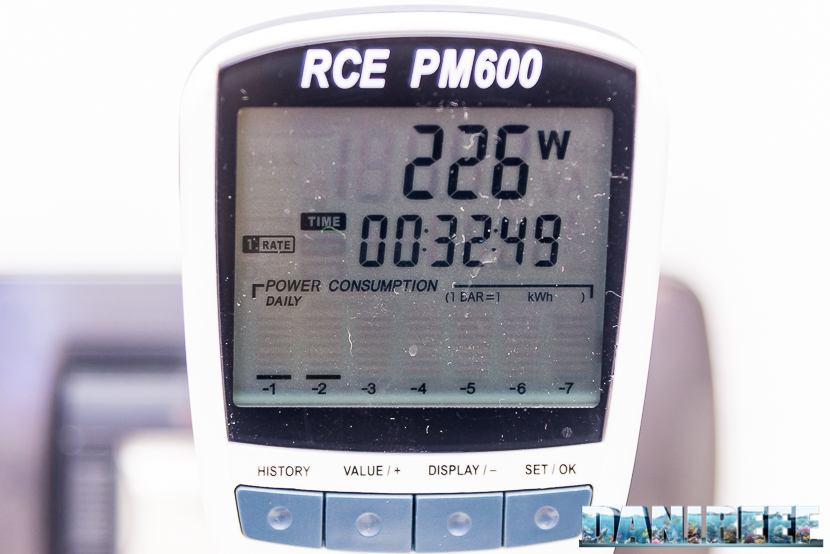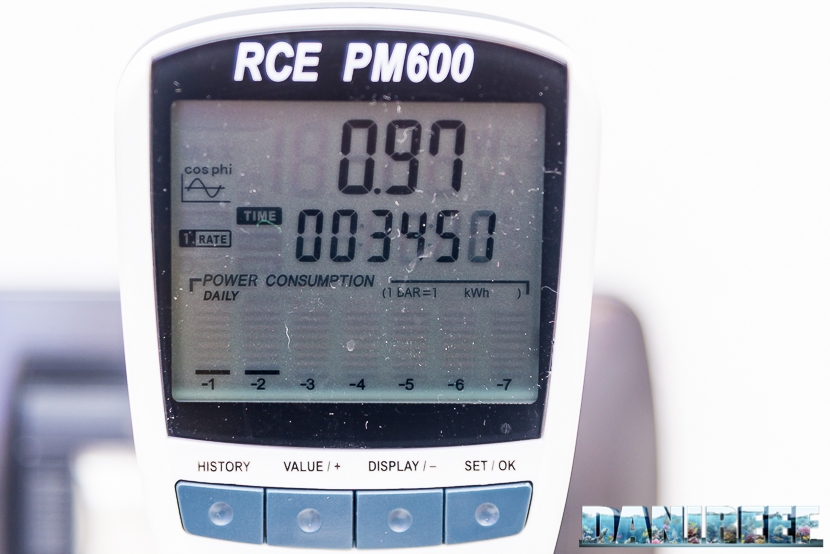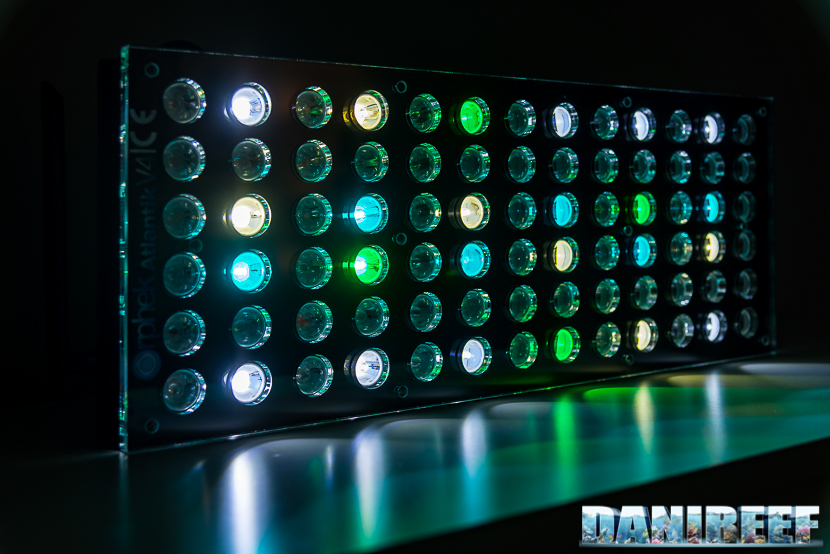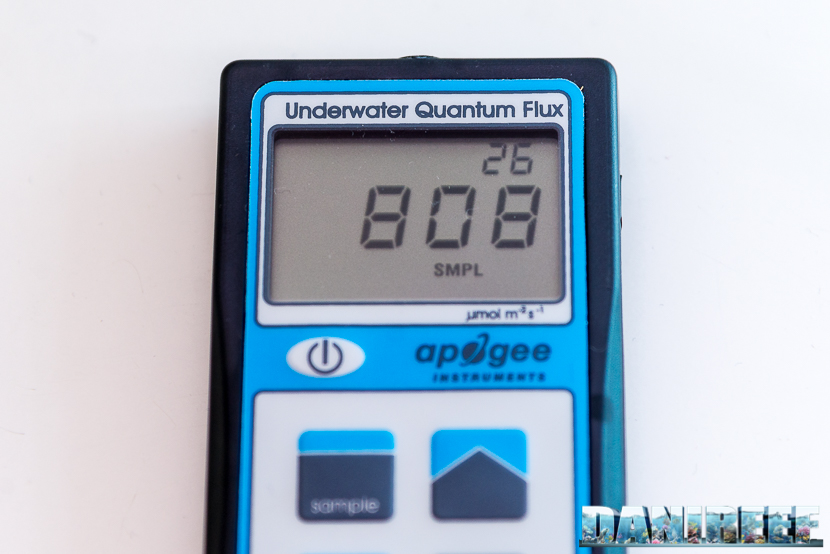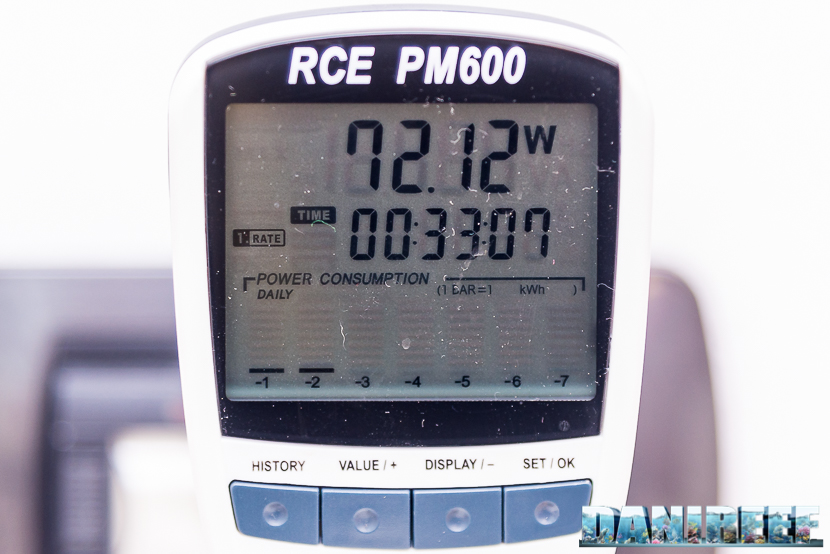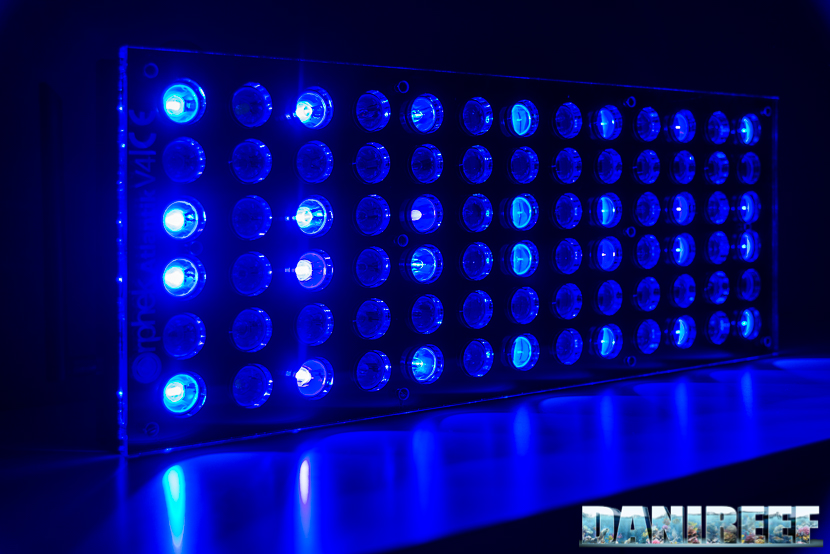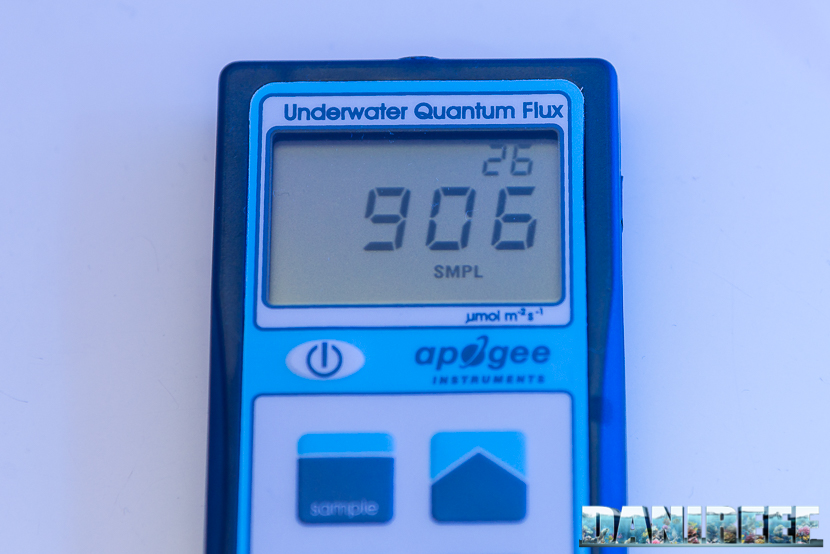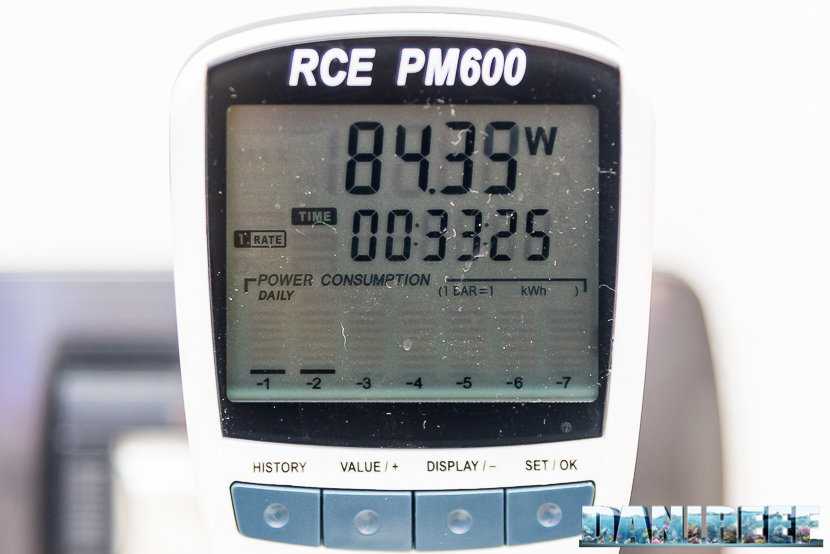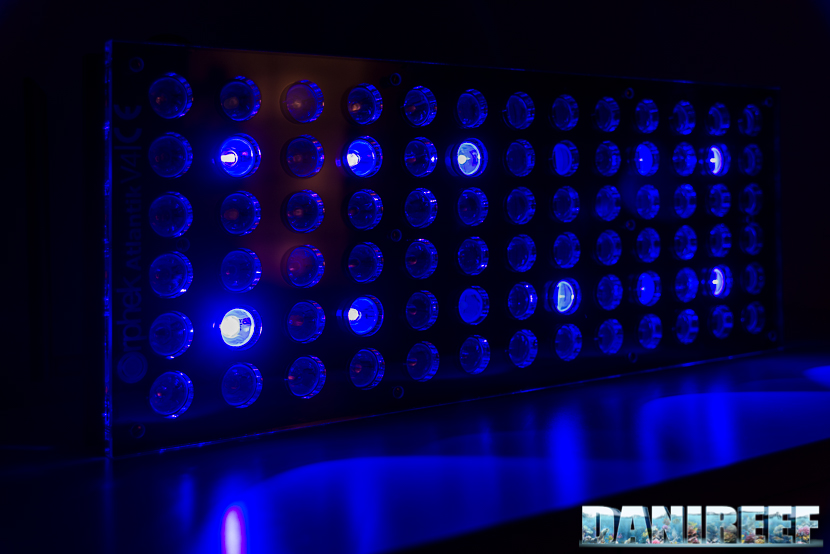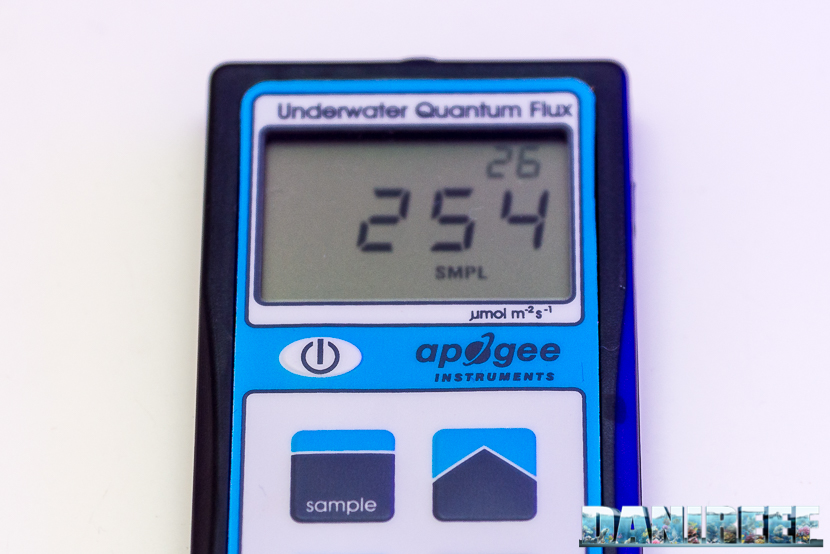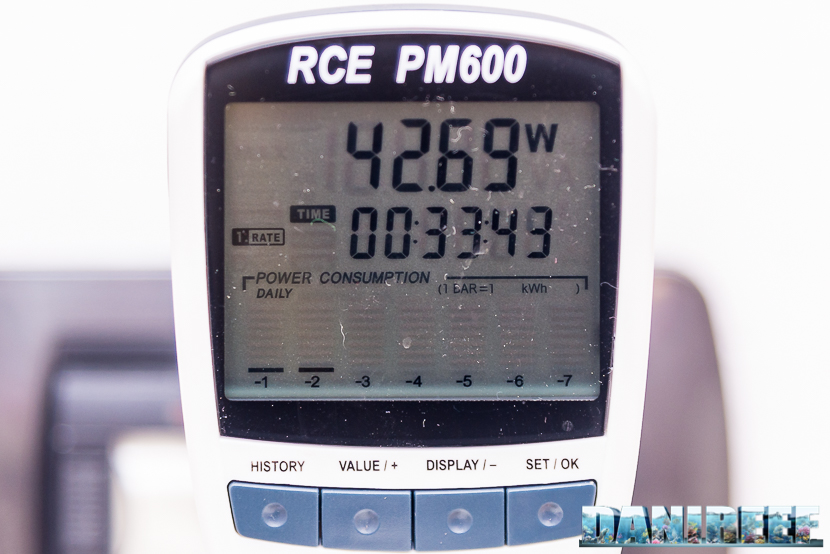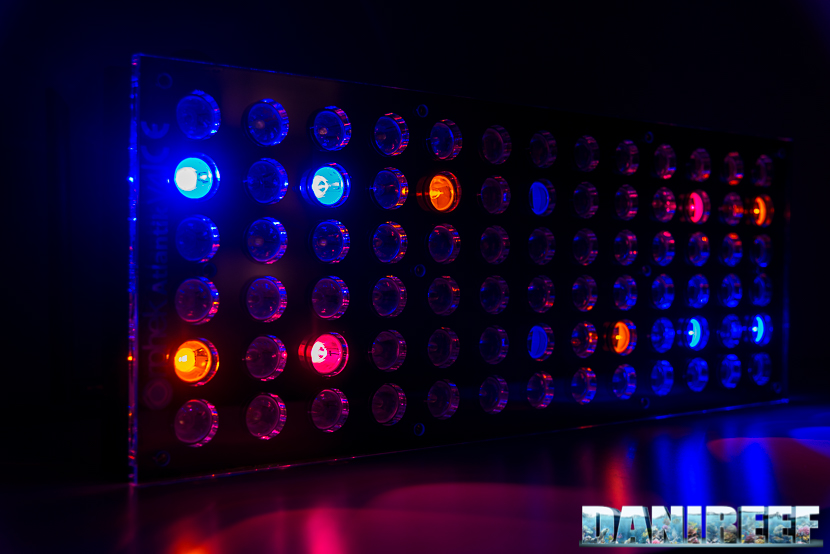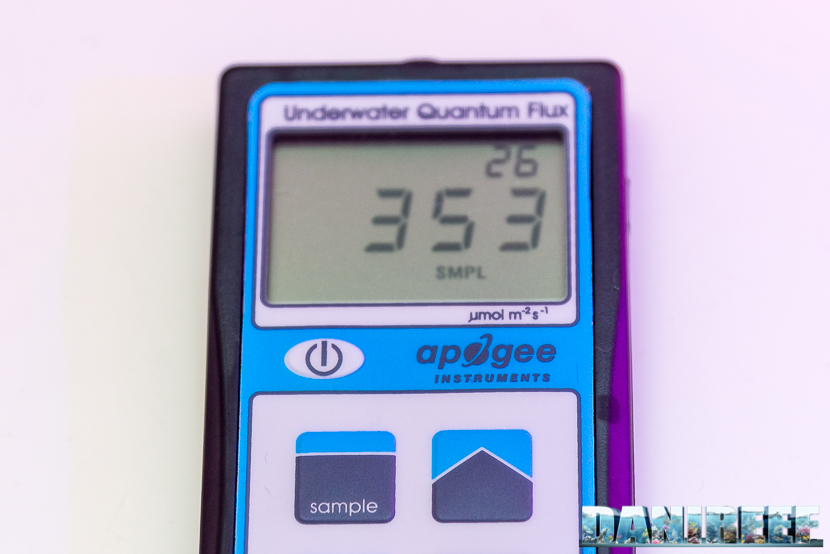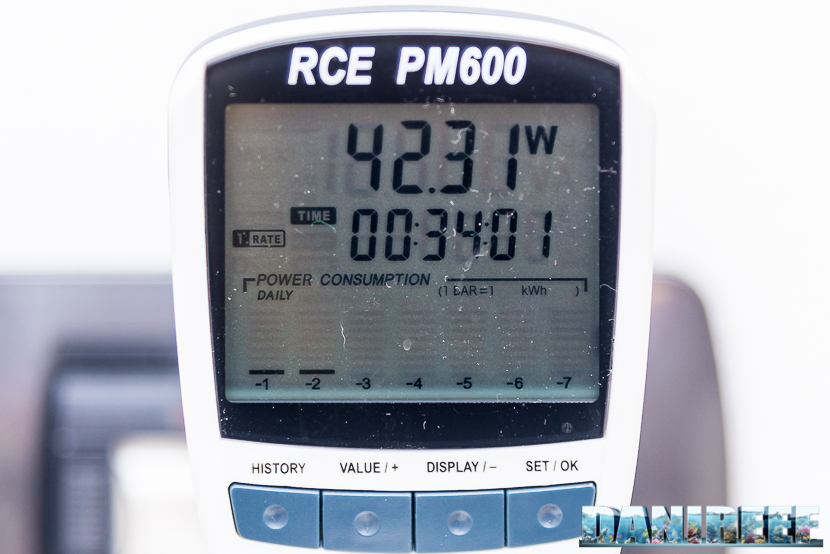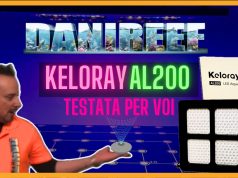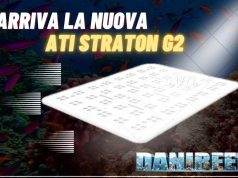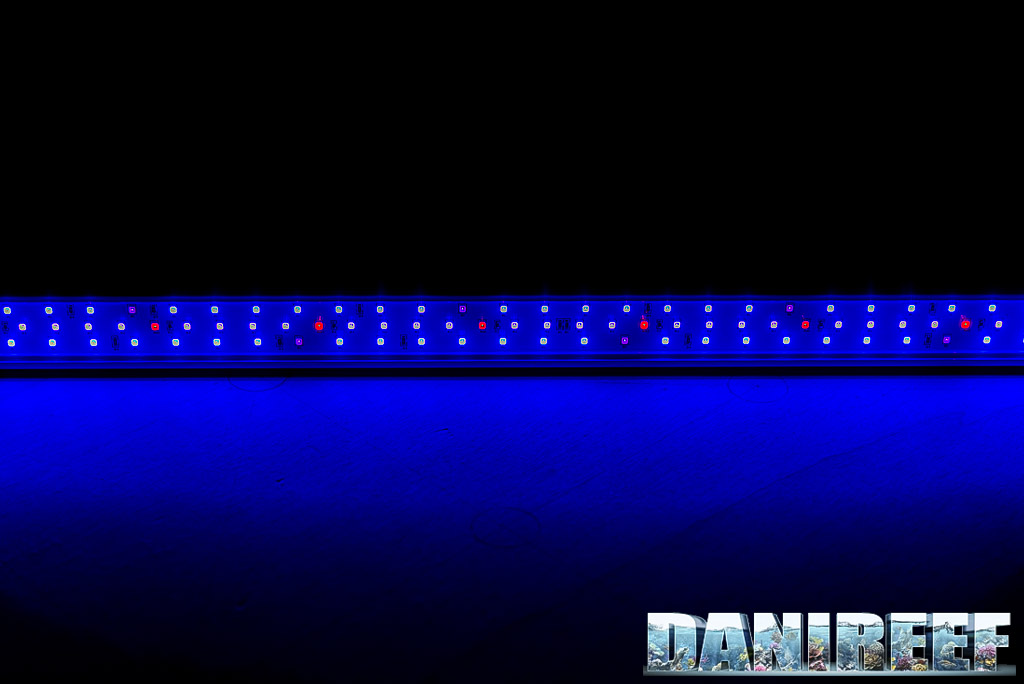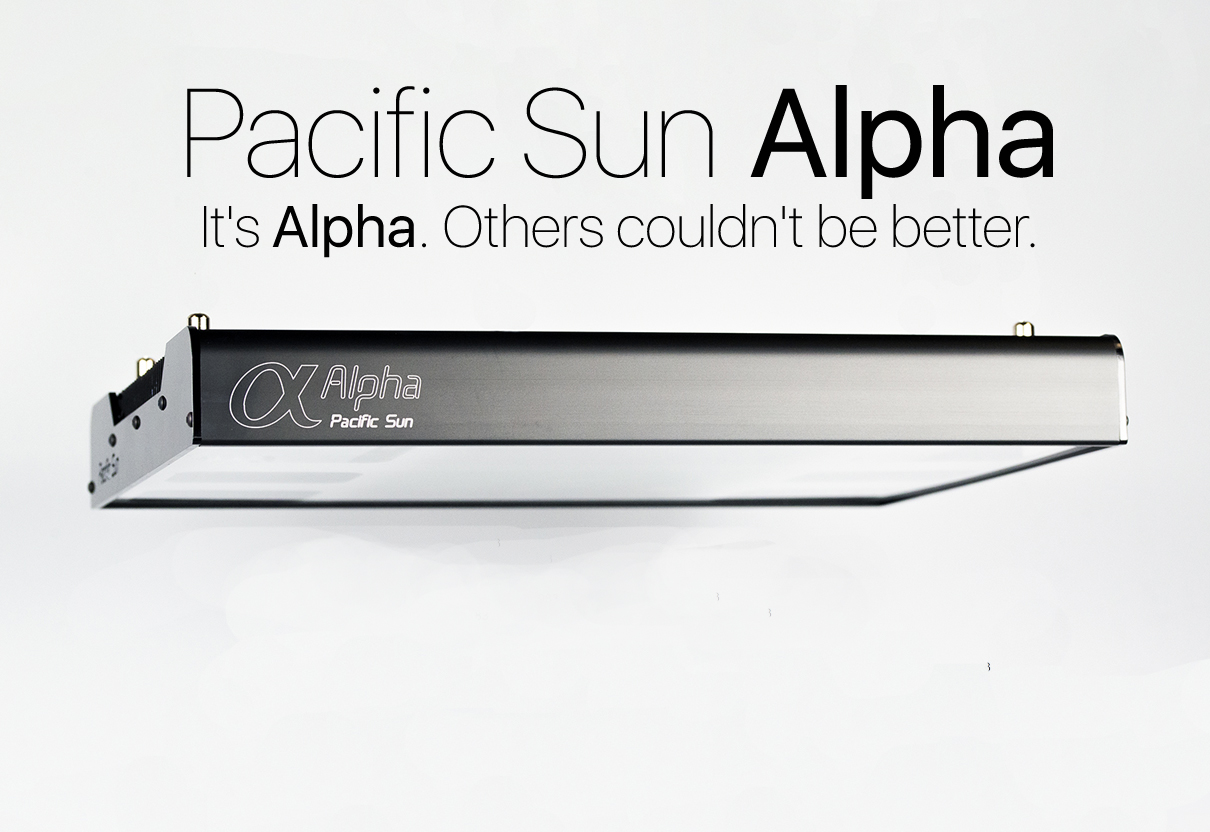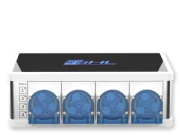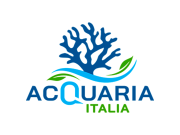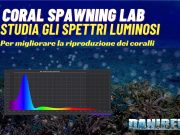Orphek Atlantik V4 – our measurements
We found something very interesting when we measured also the PAR, expressed in PFFD that is photosynthetic photon flux density in μmol m-2 s-1 trhough the best device on the market, the Quantum Meter MQ-510 di Apogee. It is calibrated in order to work under water, then if used in air the measured value has to be devided by 1,32, that’s the diving factor. When we did our test it wasn’t under water, so we had to make the conversion.
We did 5 measurements, all at the center of the ceiling light, 1 for each channel at their maximum. In uniformity with the other measurements we’ve done, and most of all for the ones we’ve going to do, we held the probe 20 cm from the ceiling light. We also had measured, as usual, the absorbed power.
As we can see from the reading from the device, we measured 2.000 par, that divided for 1,32, that gives us a result of 1.515 μmol m-2 s-1.
The total consumption of the ceiling light at its power maximum it was of 226 watt as you can see from the picture.
The Cos(fi) has an enviable value of 0,97.
Now we can see the 4 channels, individually taken. We alternated the channels in turn, leaving just one on at the 100% by one, then we measured the values.
Channel 1
Channel 1 offered a set of 5.000° Kelvin and 20.000° Kelvin, green and cyan.
The reading was the following one:
That is a value of 808/1,32=612 μmol m-2 s-1
And a consumption of 72 watt.
Channel 2
Channel 2 shows a complete blue spectrum that includes 430nm, 440nm, 450nm/460nm and 470 nm.
The reading was the following one:
That is a value of 906/1,32=686 μmol m-2 s-1
And a consumption of 84 watt.
Channel 3
It’s the channel where UV and UVb are isolated, 380 nm, 410 nm and 420 nm.
The reading was the following one:
That is a value of 254/1,32=192 μmol m-2 s-1
And a consumption of 43 watt.
Channel 4
The channel 4 is the channel where there are also the two infrared led.
The reading was the following one:
That is the 353/1,32=267 μmol m-2 s-1
And a consumption of 42 watt.
Summing up the values of the Orphek Atlantik V4
In the chart here below we collected the data of the ceiling light Orphek Atlantik V4 measured until now.
| Channel | Gradation | PAR | Consumption | PAR per watt |
| Channel 1 | Green Cyan | 612 | 72 w | 8,5 |
| Channel 2 | Blue | 686 | 84 w | 8,16 |
| Channel 3 | UV | 192 | 43 w | 4,47 |
| Channel 4 | Blue, red and infrared | 267 | 42 w | 6,36 |
| All the Channels | 1.515 | 226 w | 6,7 |
.
It’s easy to notice from the chart that the major contribution of the PAR are given by the channels green and cyan and the blue channel. The other two channels affect between the half and two-thirds of the measurement.
The incredible thing, beyond the excellent measurements, is great uniformity center-edges. We played a little with our quantum meter and we found pretty much identical values on almost the entire area covered by the ceiling light, as if it was a distribution of a neon T5. Very impressive values.
On which aquariums we recommend it?
The problem with these ceiling lights is, for the main part, due to the fact that their sizes are 61,5 per 23,8 cm. You can install two of them placed horizontally on an aquarium of at least 130×60, or in aquariums of 70 or 80 cm of width you can install them vertically with modules to repeat every 40/50 cm. Obviously for particular SPS corals.
Here we are showing you Jonathan‘s aquarium where they have been installed, so you can picture it. But in a few months we will give you our final review.
In the aquarium that you can see in picture we measured the PAR above every single coral with the previous ceiling light (4 Maxspect Ethereal) and soon we will report the data also in this new configuration.
On page 3 you can read the comparisons with all the other ceiling lights on sale






